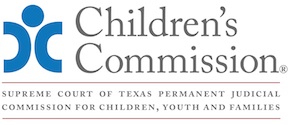C. Stages of Supervision
|
Unsupervised |
Low |
Medium |
High |
|
|
Parent(s) can be alone with child. No monitor is present during the visit. |
Visitation where the monitor may be present for a portion of the visit. Parent(s) would have some time alone with their child. |
Visitation where the monitor is close enough to observe the visit but is not required to hear everything that is said in the visit between the parent(s) and child. Parent(s) may have some time alone with their child if the monitor ensures certain conditions are satisfied. |
Child may not be removed from the presence of the monitor. Parent(s) cannot be alone with their child. |
|
|
Stage of Supervision |
Example: Day and Overnight visits; visits at the kinship placement. |
Example: Visits at the park or the parents' home where the caseworker or monitor may supervise the visit for 15 minutes then leave the child with the parent(s) for 30 minutes and then return to observe the last 15 minutes. |
Example: Parent(s) can take the child to the bathroom alone. Parent(s) can play with the child at the playground while the monitor observes from a distance. |
Example: Parent(s) must be within hearing distance and intervention distance of the monitor and cannot be alone with the child under any circumstance. |
|
Safety Assessment |
Unsupervised visitation would be used when the caseworker determines no safety concerns exist that prohibit the parent(s) and child from being alone during the visit. This stage may be used while the child is in care and immediately prior to reunification. |
Low supervision would primarily be used when the caseworker determines that there is a low level of concern for the child's safety but still a need for parental education, coaching, and skill-building. |
Medium supervision would be used when the caseworker determines there is a moderate level of concern for the child's safety and coaching, education, and skill-building are necessary. Visitation assessment determines safety factors that must be addressed in visitation plan. |
Highly structured visitation would most likely be used if there is a high level of concern assessed for a child’s physical or emotional safety during a visit. |
|
Visitation Location |
Parent(s) and Caseworker determine visitation location. |
Visitation location is a community based or "home-like" setting and offers parent(s) the opportunity to develop parenting skills or improve parent-child interactions. Visits may occur in more than one place, including appointments with therapists or other professionals, and continue at the parents’ home, relative’s home, or other community setting. |
Visitation location is a home-like setting to offer parent(s) the opportunity to develop parenting skills and improve parent-child interactions, as well as manage safety concerns. Locations may include parents’ home, relative’s home, professional’s office, park or other community setting. |
Visitation location would ensure a highly structured visit. Locations may include the CPS visiting room, professional's office or other secure location. |
|
Monitor's Role Monitor's role |
No monitor. Parent(s) provides feedback about the visit. |
Monitor’s role is primarily to aid the parent(s) in problem solving if issues arise. The monitor may also offer the parent(s) education, coaching, skills building and support to achieve permanency goals. Monitor may drop in the visit to ensure that the visit is going well and that the parent(s) or child does not have any concerns. |
Monitor’s role is to observe interactions between the parent(s) and child; ensure that the child is safe; and offer the parent(s) education, coaching, and skill-building. Monitor and parent(s) would know the conditions required to maintain safe visits and under what conditions the monitor may intervene. |
Monitor’s role is to listen to and closely observe all interactions between the parent(s) and child and intervene if needed. Parental coaching could be offered, but the primary concern would be child’s safety. Monitor and parent(s) would know the conditions required to maintain safe visits. |
